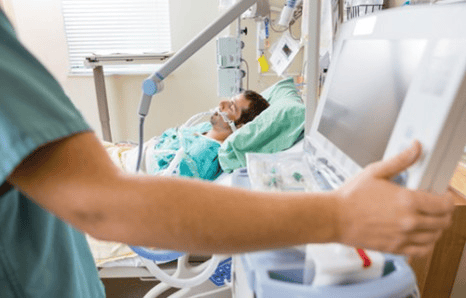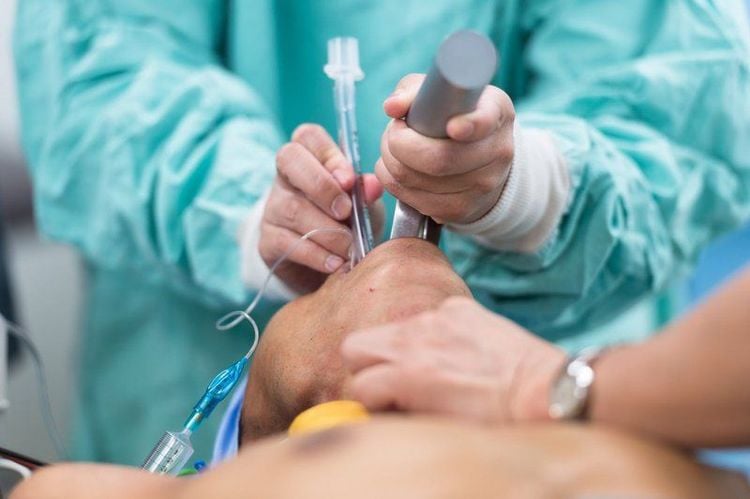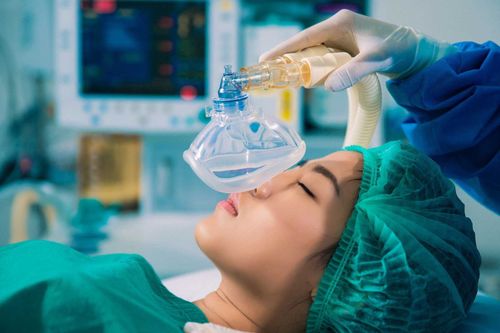This is an automatically translated article.
The article is professionally consulted by Specialist Doctor I Tran Thi Anh Hien - Department of Surgical Anesthesia - Vinmec Central Park International Hospital and Specialist I Nguyen Duc Thong - Anesthesiologist Resuscitation - Department of General Surgery - Vinmec Da Nang International General Hospital.
Anesthesia is one of the common methods used in surgery to help patients reduce pain.
1. What is general anesthesia?
General anesthesia is an anesthetic method with the aim of making the patient lose sensation, consciousness, and reflexes for a temporary period of time by using anesthetics acting on the central nervous system.Anesthesia affects the brain and causes the patient to lose feeling of the whole body, so the patient will not be aware of the surgery as well as feel no pain.
Along with the ability to paralyze the muscles of the body, general anesthesia also paralyzes the respiratory muscles, so patients under general anesthesia will need the assistance of a breathing machine to help them breathe. maintain respiration.

Bệnh nhân được thở máy
2. Types of anesthesia
Depending on how the anesthetic is introduced into the body, anesthesia is divided into 3 main types:Inhalation anesthesia Anesthesia is introduced into the patient's body through the respiratory tract, usually by inhalation of anesthetic vaporize. The drug then enters the bloodstream through the alveoli in the lungs.
Anesthesia by other routes Patients can also be anesthetized by injecting drugs into the muscle, into a vein or through the rectum.
Combined anesthesia, also known as balanced anesthesia, Anesthetizes the patient by combining different anesthetics and giving them into the body through one or more routes. For example, the combination of intravenous administration of Propofol induction and maintenance with the inhalation anesthetic sevoflurane. Combine anesthetics with muscle relaxants and pain relievers. General anesthesia with regional anesthesia.

Gây mê đường tĩnh mạch
3. General anesthesia process
First, the patient will be checked by the doctor to make sure there is no mistake about the person. The doctor will then give the patient a pain reliever, a sleeping pill, and a muscle softener before proceeding with the intubation. Anesthesia can only begin when the patient has completed attaching the monitoring devices and safety procedures have been completed.As mentioned, the process of general anesthesia paralyzes the muscles of the body including the respiratory muscles, so the lungs are not able to work on their own, and need the help of a ventilator to provide breathing. instead of the lungs.
To ensure the safe operation of the surgery, every patient's indicators such as heart rate, number of breaths, blood oxygen saturation, level of anesthesia, muscle tenderness are closely monitored through the electronic device. In addition, the anesthesiologist and operating room staff also closely monitor the patient's progress.
After surgery is complete, depending on the type of surgery that the patient undergoes and the way he or she is breathing, there are different ways to wake up after general anesthesia. Postoperative extubation should be performed as soon as possible. However, in some major surgeries such as brain or open-heart surgery, patients may need ventilatory support for 6-8 hours after surgery and take longer to wake up.

Tiến hành đặt ống nội khí quản trước khi phẫu thuật
4. Some notes after general anesthesia
Patients who wake up from surgery can start with small sips of water, gradually drinking other liquids, then eating liquids, and finally be able to return to their usual diet. This process varies from person to person and can take several hours or days.The first few days after surgery, the patient should take time to rest and maybe do some light exercise to relax.
In particular, patients are advised not to operate heavy machinery such as driving a car; and for at least 24 hours from waking up should not sign any legal documents. In addition, alcohol and stimulants, sedatives are absolutely not used in the first days after surgery.
5. What are the risks of general anesthesia?
Although general anesthesia helps patients reduce pain during surgery, there are still certain risks with different levels in different patients.Some possible risks such as:
Nausea, vomiting: this is the most common condition after general anesthesia but it is easy to take precautions if the doctor is informed in advance about the medical history. of the patient before surgery. Aspiration of gastric juice due to vomiting during anesthesia causes complications of airway spasm, pneumonia, and atelectasis. The endotracheal tube cannot be placed; oropharyngeal damage, tooth fracture, oropharyngeal mucosal tearing Awake during surgery: the condition during general anesthesia but the patient still does not completely lose consciousness can feel pain during surgery. Hoarseness, sore throat: due to intubation, but this condition is not too serious. Drowsiness: This is common and usually goes away once the anesthetic has been eliminated from the body. Confusion: common in the elderly, especially those with Alzheimer's disease.

Người bệnh có thể buồn nôn sau gây mê
Vinmec International General Hospital is one of the hospitals that not only ensures professional quality with a team of leading medical doctors, modern equipment and technology, but also stands out for its examination and consultation services. comprehensive and professional medical consultation and treatment; civilized, polite, safe and sterile medical examination and treatment space.
Graduating from the residency training program, Dr. Tran Thi Anh Hien has experienced many different working environments such as Binh Dan Hospital, Ho Chi Minh City University of Medicine and Pharmacy Hospital and French-Vietnamese Hospital. before returning to work at the Anesthesia and Anesthesia Unit - Department of Surgical Anesthesia - Vinmec Central Park International General Hospital.
Doctor Duc Thong has 14 years of experience in the field of Anesthesia. Especially, with 12 years working at the Department of Anesthesiology and Resuscitation at C Da Nang Hospital, Dr. Thong has extensive experience in the field of Anesthesia and resuscitation for elderly patients with many comorbidities and serious illnesses. surgery; helping many heavy and complicated surgeries to be successful. Currently, he is an anesthesiologist at the Department of General Surgery - Vinmec Da Nang International General Hospital.
Customers can directly go to Vinmec Health system nationwide to visit or contact the hotline here for support.
SEE ALSO:
Composition of anesthetic (sedation) Care of mechanically ventilated patients Intubation is indicated in what cases?














